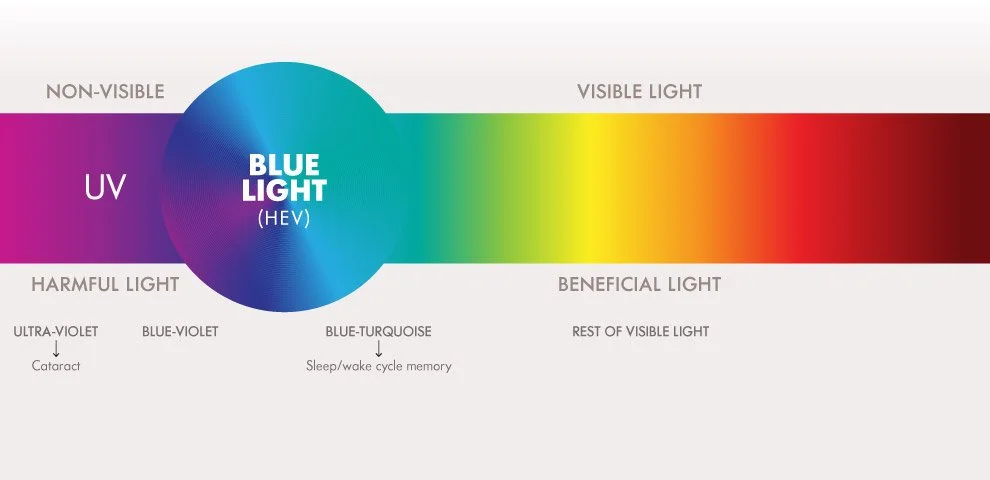Blue Light - What’s the Story?
We hear a lot about blue light, but what does it actually mean?
Blue light is part of our visible light spectrum. It has many purposes:
regulates circadian rhythms - the body’s natural sleep and wake cycle
boosts alertness
helps memory and cognitive function
elevates mood and can increase our sense of wellbeing
assists our eyes to see colour
WHERE IS BLUE LIGHT?
It's a common misconception that our digital devices are the biggest source of blue light. But the SUN is actually our main source of blue light and it provides us with the amount our bodies need to function effectively.
Not all blue light is bad: our bodies use it to wake up in the morning, and the lack of it in the evenings helps us go to sleep. According to the Canadian Association of Optometrists “There is no clinical evidence that artificial blue light at low intensity and shorter exposure periods is harmful to the eye. Research suggesting a damaging effect of blue light on eye cells has only been conducted in vitro (in the lab) rather than on the living human eye.”
DO YOU NEED PROTECTION FROM BLUE LIGHT?
So, while current research shows that the amount of blue light from our digital devices (computers, phones, LED lights, and flat screen tv’s) will not harm or affect the health of our eyes, limiting our exposure in the evenings will help our bodies fall asleep and help to reduce digital eye strain.
Getting a blue light filter on your lenses is an individual decision. We know that long term and excessive exposure to sunlight and UV light is damaging to our eyes, so for some of our clients it makes sense to also use a blue light filter. If you are a heavy user of electronic devices or you spend plenty of time enjoying the outdoors, ask us for a blue light filtering coating on your clear glasses or Transitions sunglasses. This can help reduce the strain on your eyes and help keep them healthy!
SOURCES:
Canadian Association of Optometry, 2022
Optometry Times, February 2020
Harvard Health Publishing, May 2019




